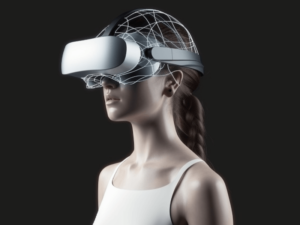The penis serves two key functions: storing and transporting sperm. It works best when the urethral opening (meatus) is at the head (“glans”) of the penis.
It can be painful for some people if the penis goes in too quickly or the vagina isn’t properly lubricated. But that pain should go away with time and practice.
Vaginal Orifice
The vagina is a muscular, flexible tube that extends from the cervix, a neck-like piece of tissue, to the uterus. Its walls can expand and contract to create the space needed for something as slim as a finger or as wide as a baby, and it contains a band of pelvic floor muscles that help with lubrication during sexual intercourse.
It’s also the pathway through which a baby leaves the body during birth and menstrual blood flows during periods, and it’s the hole that accepts a penis during sexual intercourse. It’s surrounded by a thin membrane called the hymen, which may be stretched during exercise or sex to allow a penis to fit through, but it usually remains intact when not in use.
The inner vaginal wall is made of a layer of stratified squamous epithelium that provides protection and is lubricated by cervical mucus. Below this is a dense layer of lamina propria, or connective tissue, that gives the vagina its structure and strength. The clitoris is attached to the lower part of this layer.
The clitoris is a curved piece of erectile tissue that runs along the tops of both sides of the vagina, according to Planned Parenthood. It has 8,000 highly sensitive nerve endings, making it one of the most erogenous zones in the female body and a major source of sexual pleasure for many women.
Anus
The anus is the farthest hole down there in a woman’s body. It is the one through which women have sex and it’s also the way they poop. Some women find that touching their anus and putting penis in it can be pleasurable, but others feel pain and irritation. This is why it’s important to use plenty of lubrication (like water based lube that you can buy at the drugstore) for anal sex or intercourse.
The meatus is surrounded by a layer of soft, smooth skin that covers a hard, muscular tube called the esophagus. Two sphincters (internal and external anal) control the opening of the anus and how much liquid can flow through it. If the sphincters are too tight, they can restrict urination. The anus also contains a web of veins that drain into the pelvic area.
Boys who have a small anus (or a partially formed foreskin) may experience problems when they go to the bathroom. Urinating may be painful, and it can cause urine to spray to the side or downwards. This is a condition called hypospadias. It can be corrected with surgery. It’s important to seek medical attention if you have trouble urinating or you’re experiencing pain in your anus or groin area. It could be an early sign of a sexually transmitted infection.
Urethra
The urethra is a dynamic fibromuscular tube that serves as the terminal region of the male urinary and reproductive systems. In men, it is 8 inches (20 centimeters) long, running from the bladder to the tip of the penis. It receives urine from the prostatic urethra and semen from the testes during ejaculation.
The urethral sphincter muscle provides voluntary control over micturition. It separates the prostatic and membranous portions of the urethra, with the membranous section being the narrowest and least dilatable part. It receives sperm from the testes during ejaculation, and is supplied with blood by branches of the internal pudendal artery.
The spongy urethra is the largest and final part of the urethra. It passes through the bulb and corpus spongiosum of the penis, and terminates in the meatus or external urethral orifice (the glans penis). This portion is able to be dilated by a physician to accommodate a finger. The spongy urethra carries the spermatozoa and glandular secretions from ejaculation out of the body, and prevents urine or semen from returning back into the lower urinary tract. In some cases, the urethra may not open properly at birth (clinically referred to as hypospadias). This condition can cause urine or semen to enter the vagina. It is usually corrected by surgery under general anesthesia. The urethra is lined by urothelium, with some segments being covered by squamous epithelium.
Perineum
The perineum is a diamond-shaped area of skin located between the scrotum and anus in males and between the vagina and anus in females. It is the bottom region of the pelvic diaphragm and serves as an erogenous zone. The perineum also houses the external genitalia of both sexes, and it includes the muscular external anal sphincter. The main neurovascular supply of the perineum comes from the internal pudendal artery (along with its nerve and vein), which travels through a “canal” called Alcock’s canal and supplies both the anal and genital triangles.
The urogenital triangle contains your urethra and the opening of the anus, while the anal triangle is formed by the anus, urethral outlet, and surrounding muscles. A tough mass of fibromuscular tissue called the perineal body sits in the middle of these two triangles. It acts as a central attachment for the perineal muscles and functions to support the pelvic floor.
A transverse line drawn between the ischial tuberosities splits the perineal surface into two triangular portions: the anterior urogenital perineum and the posterior anal perineum. The anterior portion, called the urogenital perineum, is the only part of the perineal cavity that crosses the anus in both males and females. This explains why women may feel more pain than men during sex. In addition, the urethra and anus are set at an angle in the perineal canal, which means that when a man inserts his penis into this hole it can cause the woman to experience pain and discomfort.
See Also:


